Introducing the first planning effort at UC Berkeley to comprehensively address accessibility across the campus landscape
University of California, Berkeley Accessible Paths and Places Master Plan

As a leader in disability rights, UC Berkeley is committed to making accessible the 250-feet of grade change across its Campus Park. Through 24,800 linear feet of accessible pathways and 37 discrete projects situated across 7 primary accessible corridors, the plan provides a prioritized framework to realize this aspiration.
The plan establishes an accessible design language that reflects an understanding of UC Berkeley’s geological setting and cultural landscape heritage that balances the formal beaux arts and informal picturesque styles. The design language prioritizes meandering barrier-free accessible pathways of five percent slopes or less, leveraging ramps only when necessary. The Accessible Paths and Places Master Plan establishes a cohesive vision and set of projects that create a network of accessible pathways and open spaces throughout UC Berkeley’s Campus Park.
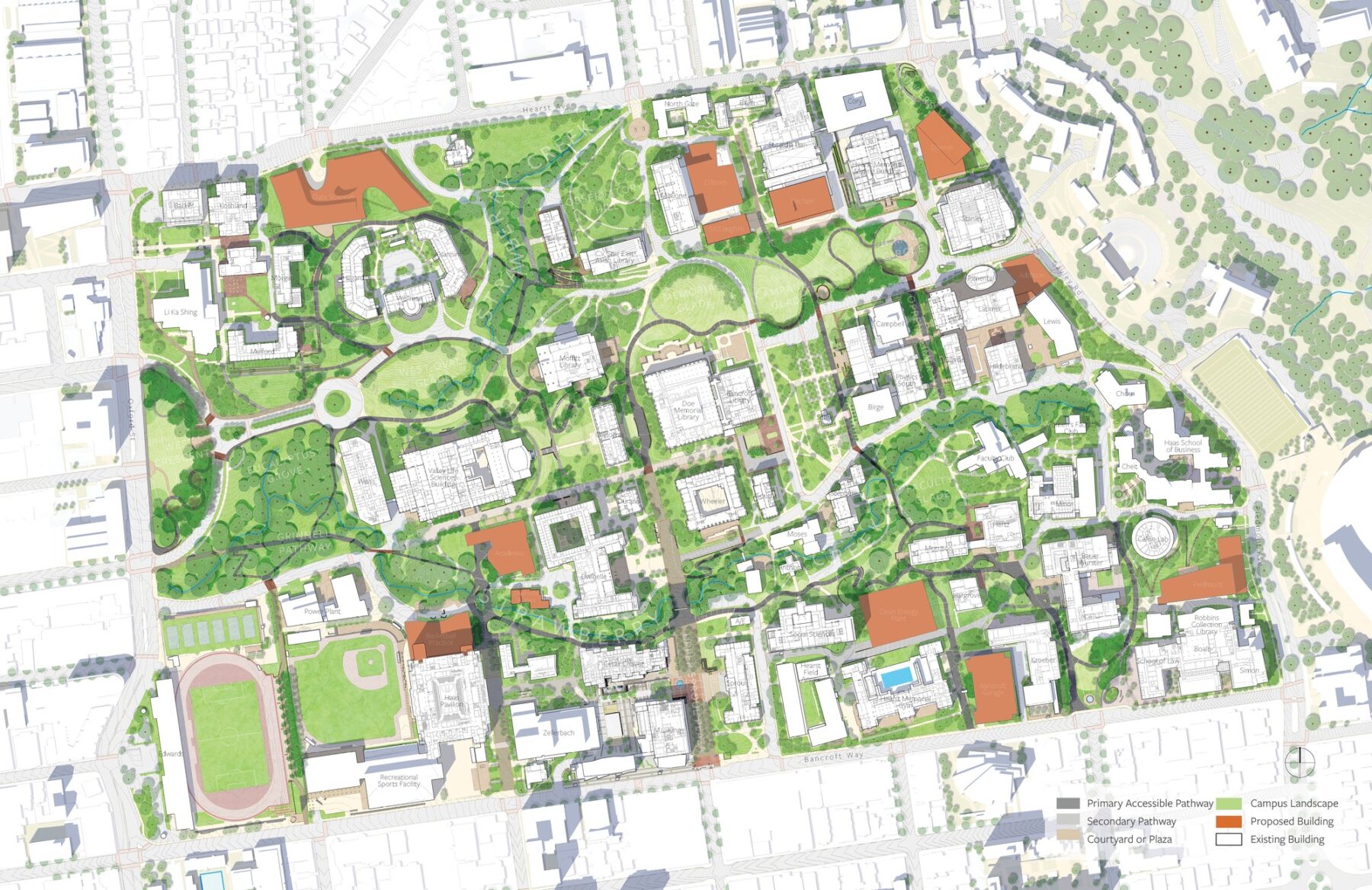
Site plan
The project evolved from the university’s ADA Transition Plan, which cataloged 42,000 accessibility barriers across campus. The plan–which includes design solutions at site and campus-wide scales–goes beyond ADA compliance to embrace human-centered design practices, which focus on each person’s unique experiences and sensory responses in the built environment.

Centering the Human Experience
The plan prioritizes barrier-free accessible pathways of 5% slopes or less, leveraging ramps only when necessary, avoids tokenizing the accessible experience, reimagines associated quads, courtyards and plazas, and reinforces legibility through material guidelines.
The multi-year process was guided by a core team, campus leadership, and cross-sectional Working Group. Tactile models and braille maps enabled inclusive engagement and multi-sensory collaboration, while final documentation included both visual and braille final reports. The team also hosted a public Human-Centered Design Event to share themes and lessons learned on the topic.

An interactive and human-centered process centered Berkeley’s disability community
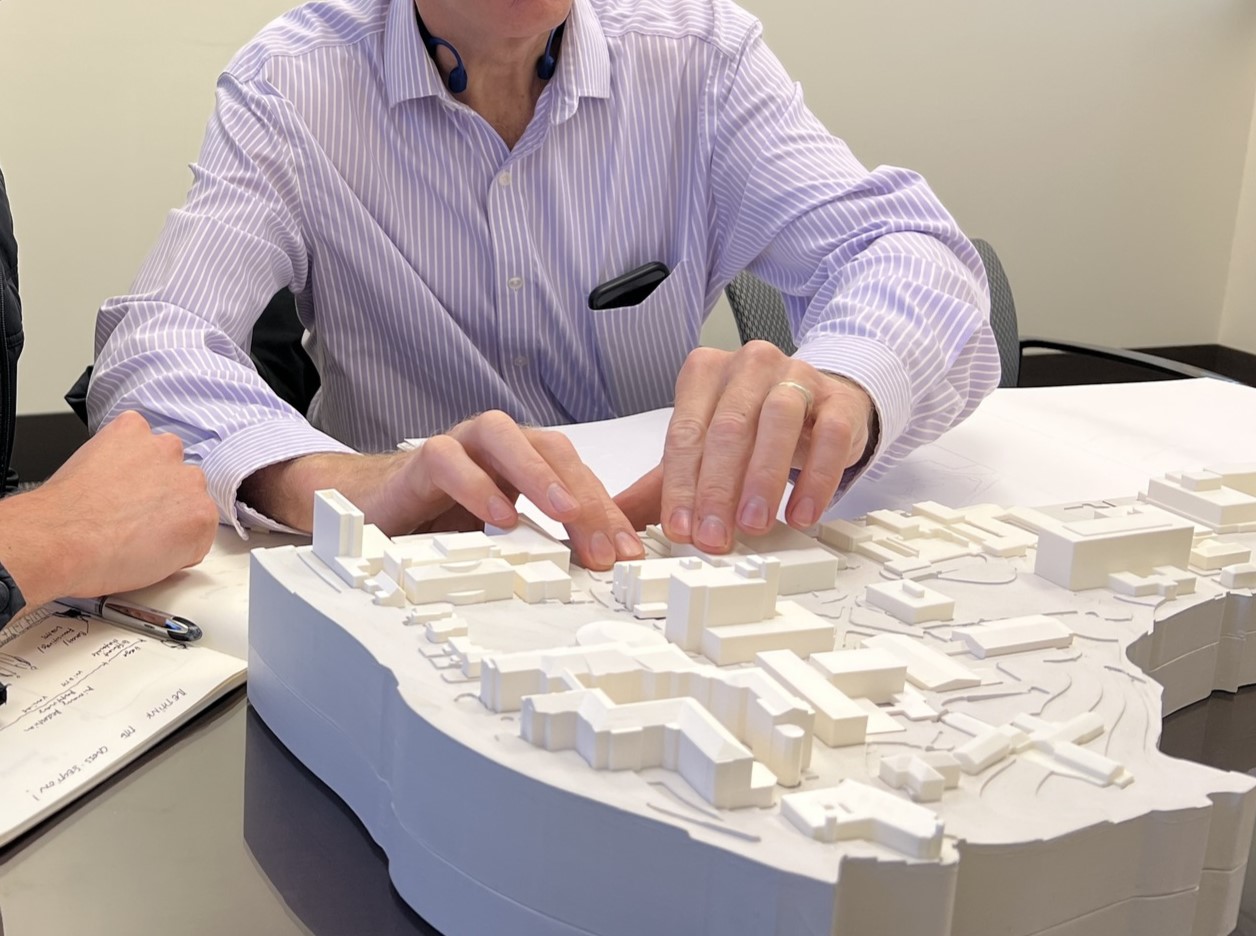
Tactile models and braille maps enabled inclusive engagement and multi-sensory collaboration
The team analyzed prior planning documents including the Campus Master Plan, Landscape Heritage Report, and ADA Transition Plan, which included a GIS database that highlighted 42,000 instances of ADA non-compliance. The team synthesized and visualized this data into cross-slope and running-slope diagrams that informed priority areas of intervention. This data was supplemented with surveys to confirm pathway slopes, topography, site features, tree condition, utilities, environmental setbacks, capital project footprints, and accessible entries. Ground floor plans were integrated with slope data to understand accessibility at indoor-outdoor thresholds.
Introducing an Accessibility Framework
The resultant plan situates 37 discrete landscape projects across 7 corridors, nestled within an overall accessibility framework. Each project identifies existing slope deficiencies, proposed slope strategies, site features to be retained or removed, earthwork analysis, sections, perspective views, and plans to achieve thoughtful compliance. Proposed projects address accessibility while also promoting placemaking to reinforce the campus landscape identity.
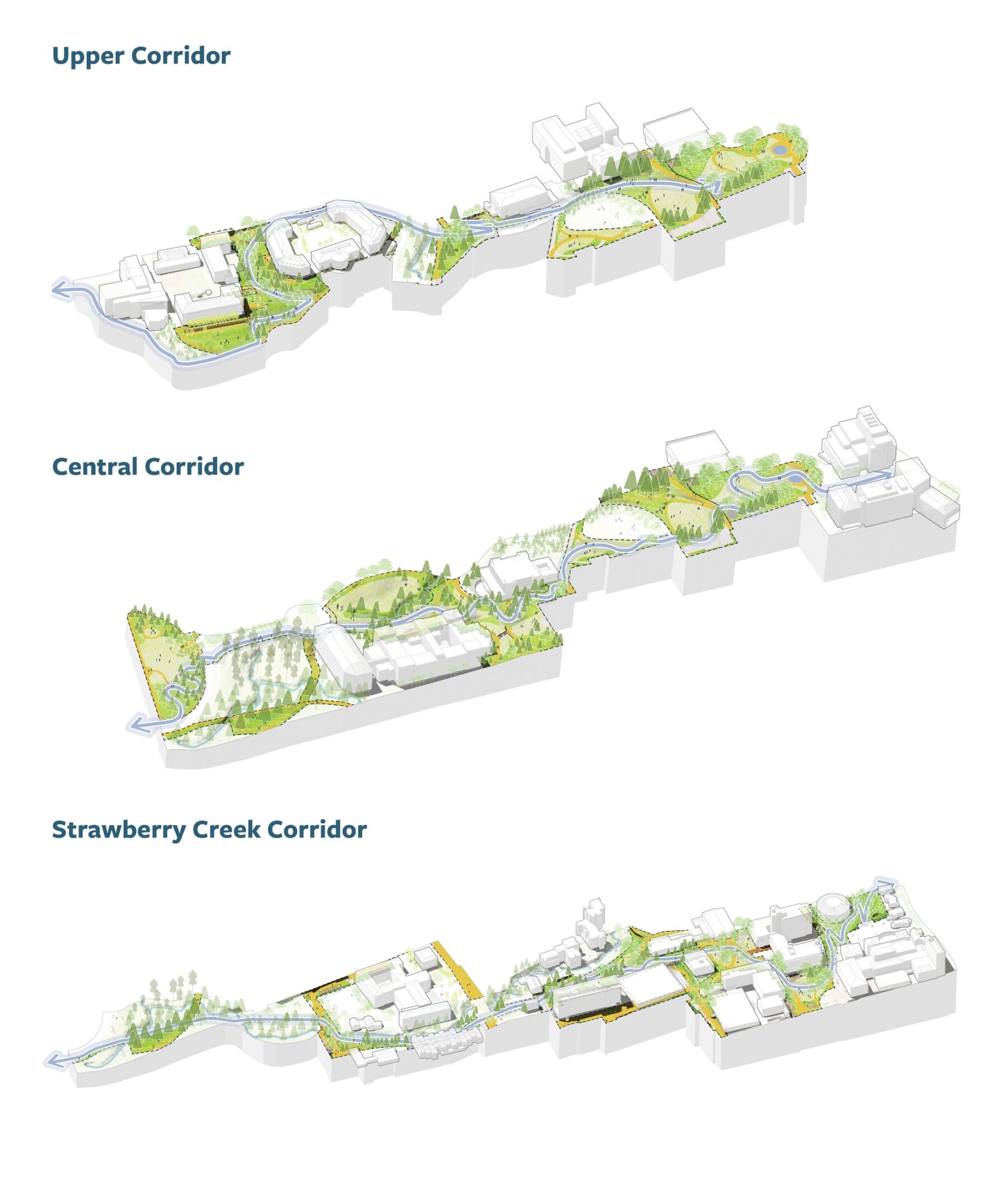
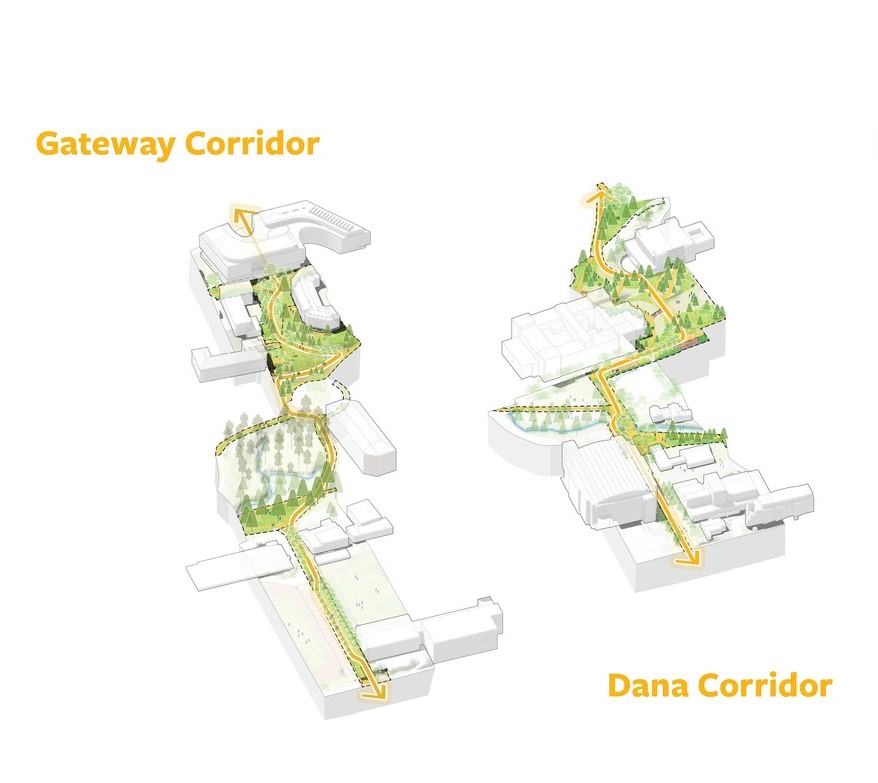
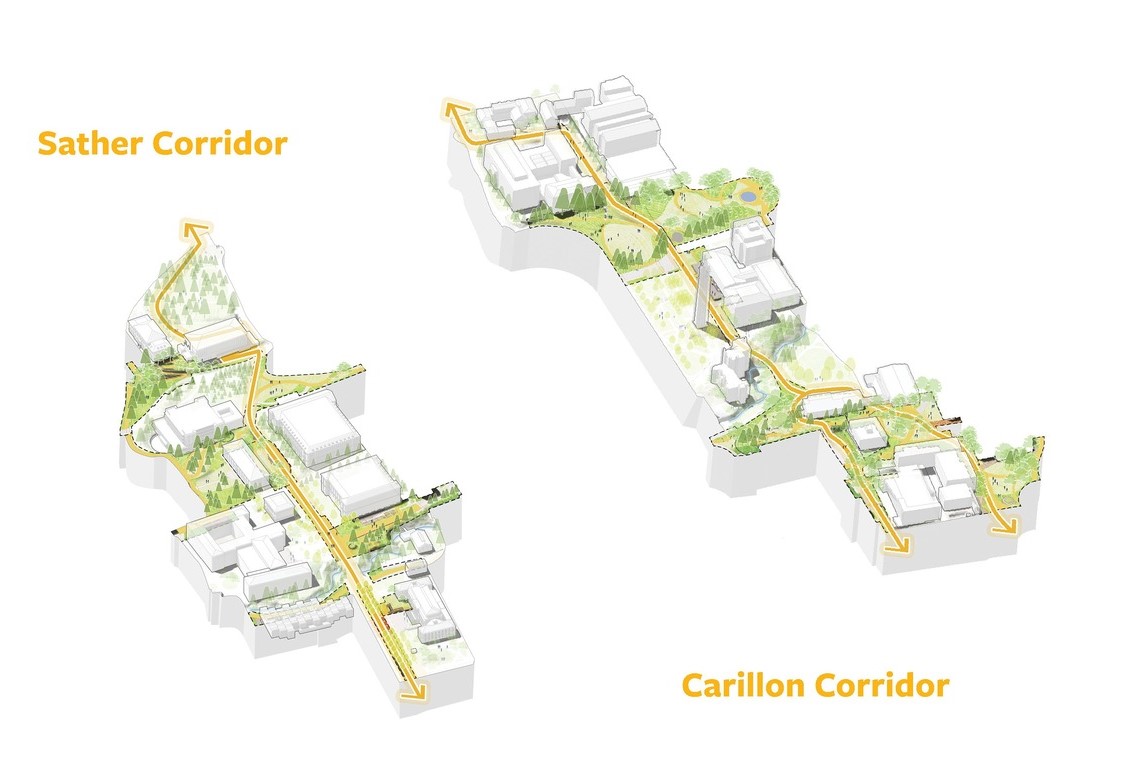
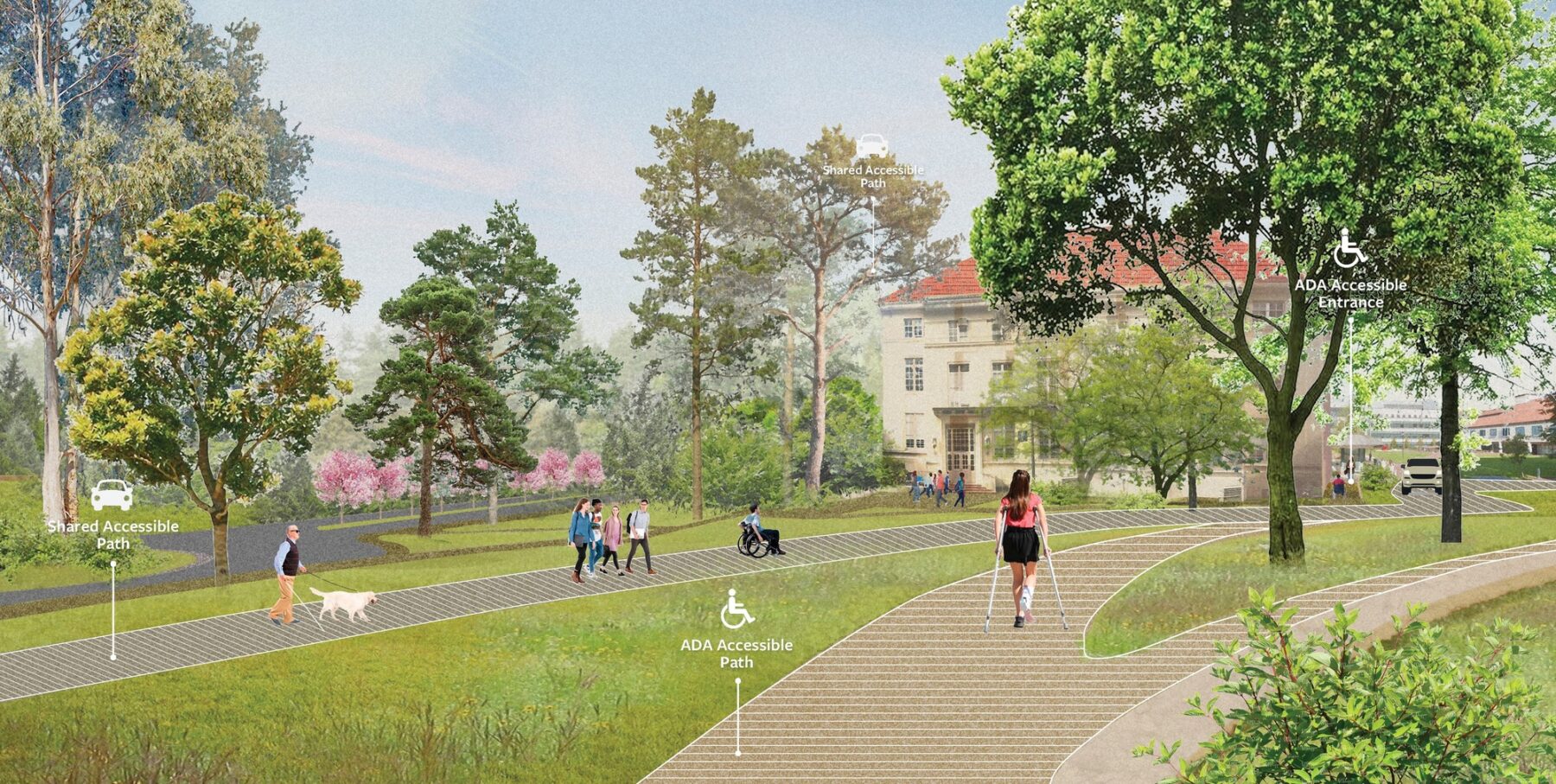
The projects go beyond compliance to embed human-centered design practices focused on mobility, vision, hearing, and cognition. By centering campus design on accessibility, it becomes a driver of the campus’ identity. Cost estimates for each project give the university the ability to make capital requests and a roadmap for implementing the project over a 20 year horizon.
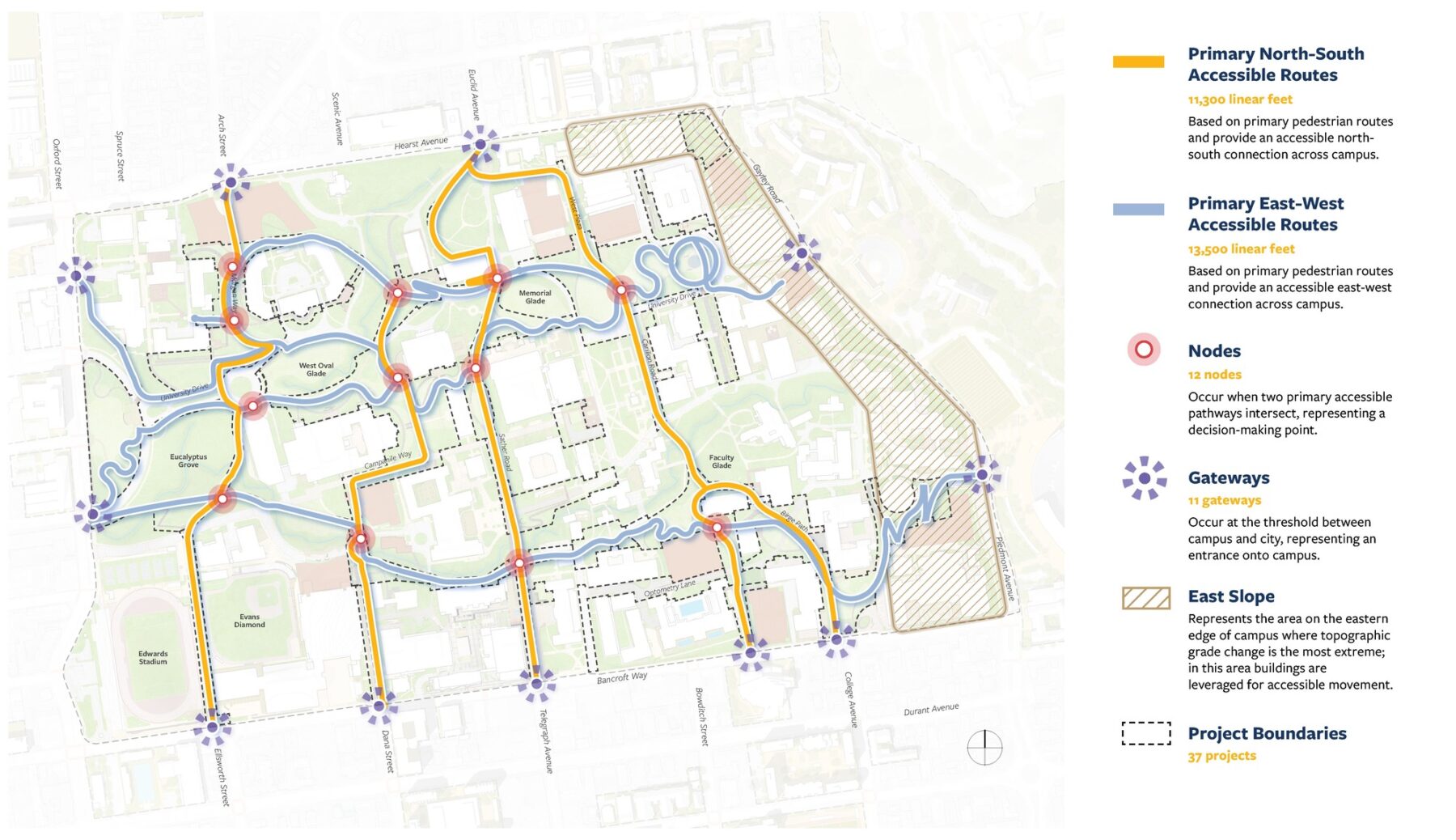
The comprehensive accessibility framework is structured around five elements
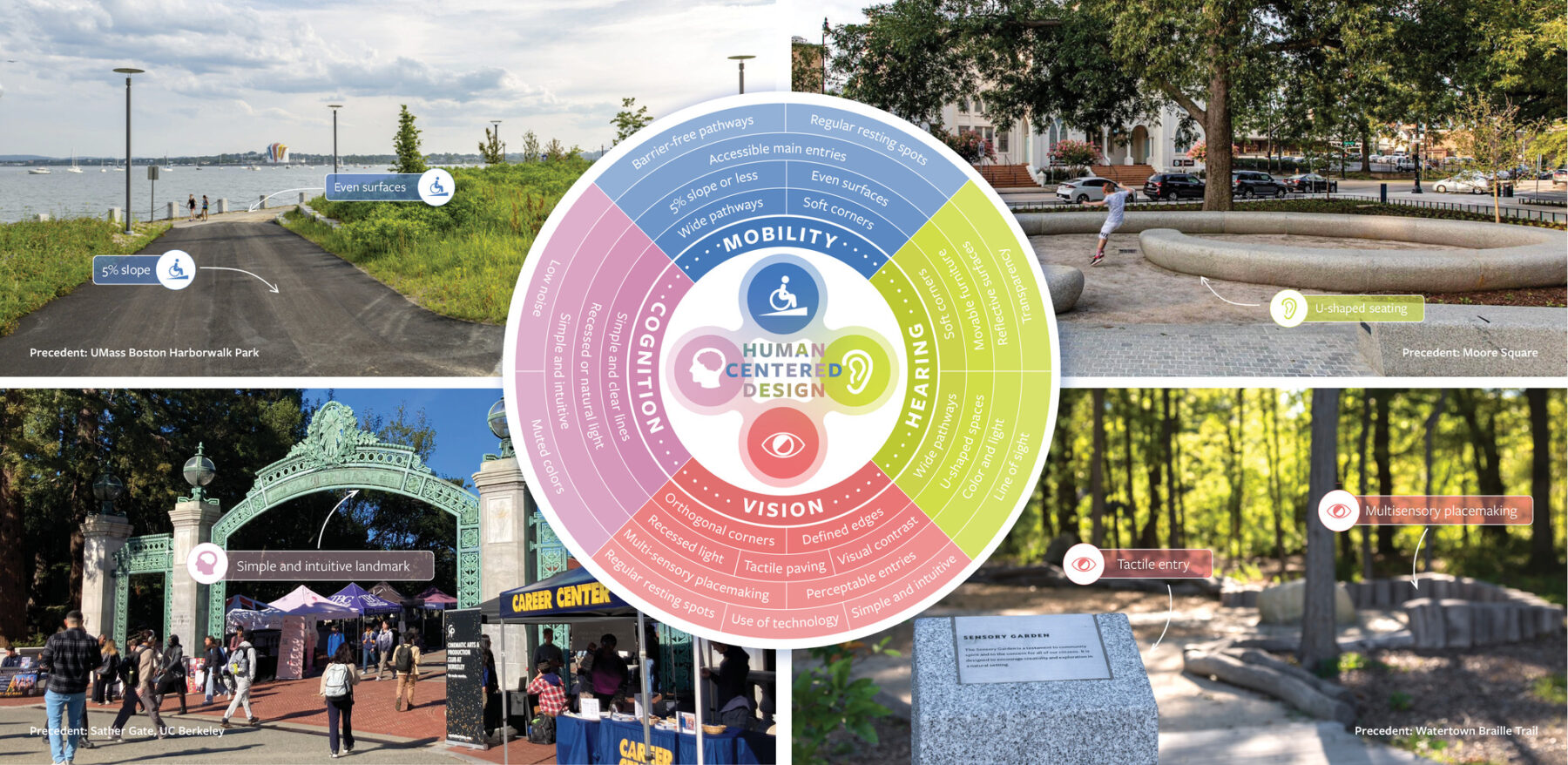
Recommendations went beyond compliance to embrace human-centered design practices
A Simple and Intuitive Wayfinding System
Leveraging a new system of subtle grooves on existing standard materials, the accessibility framework operates as a simple and intuitive wayfinding system for all users. The grooves work as a visual and haptic texture, providing continuous and real-time feedback for blind individuals using canes. Interacting with grooves in a parallel or perpendicular approach denotes its cardinal direction. With input from the disability community, UC Berkeley has already begun piloting and refining the grooved treatment to realize the initial segments of the accessible network.
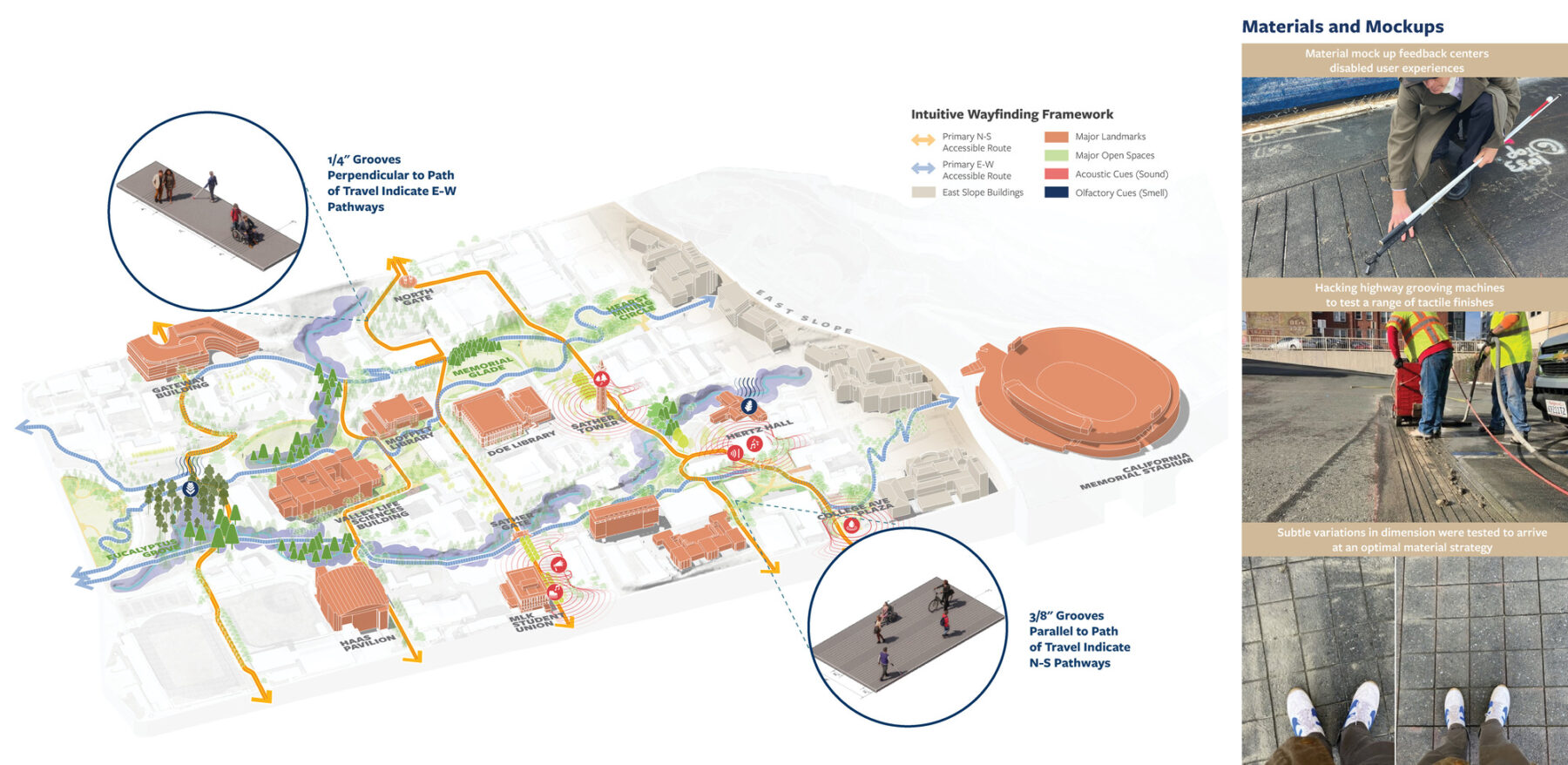
The accessibility framework articulates a multi-sensory, simple, and intuitive wayfinding strategy and creates new tactile material guidelines
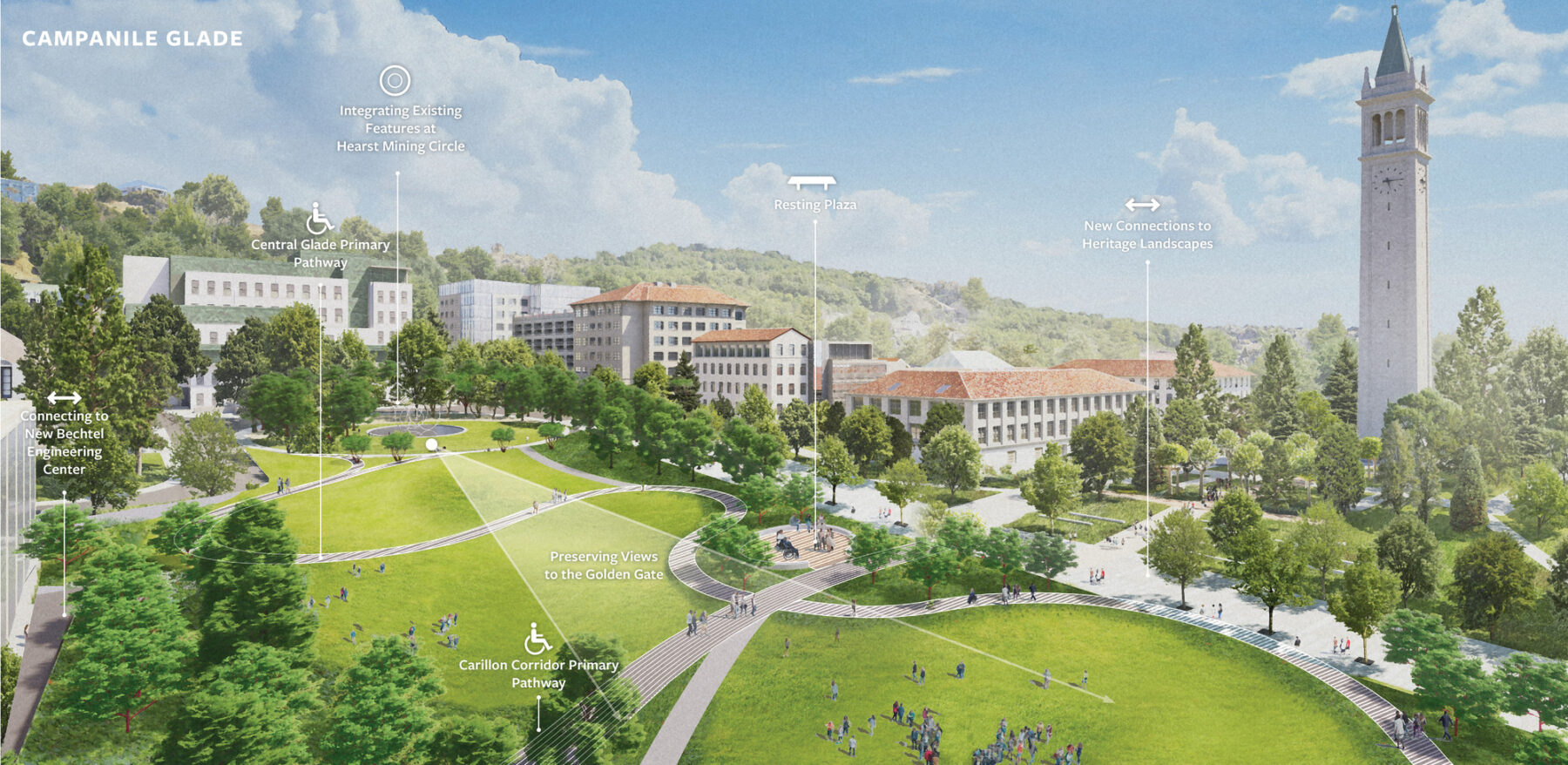
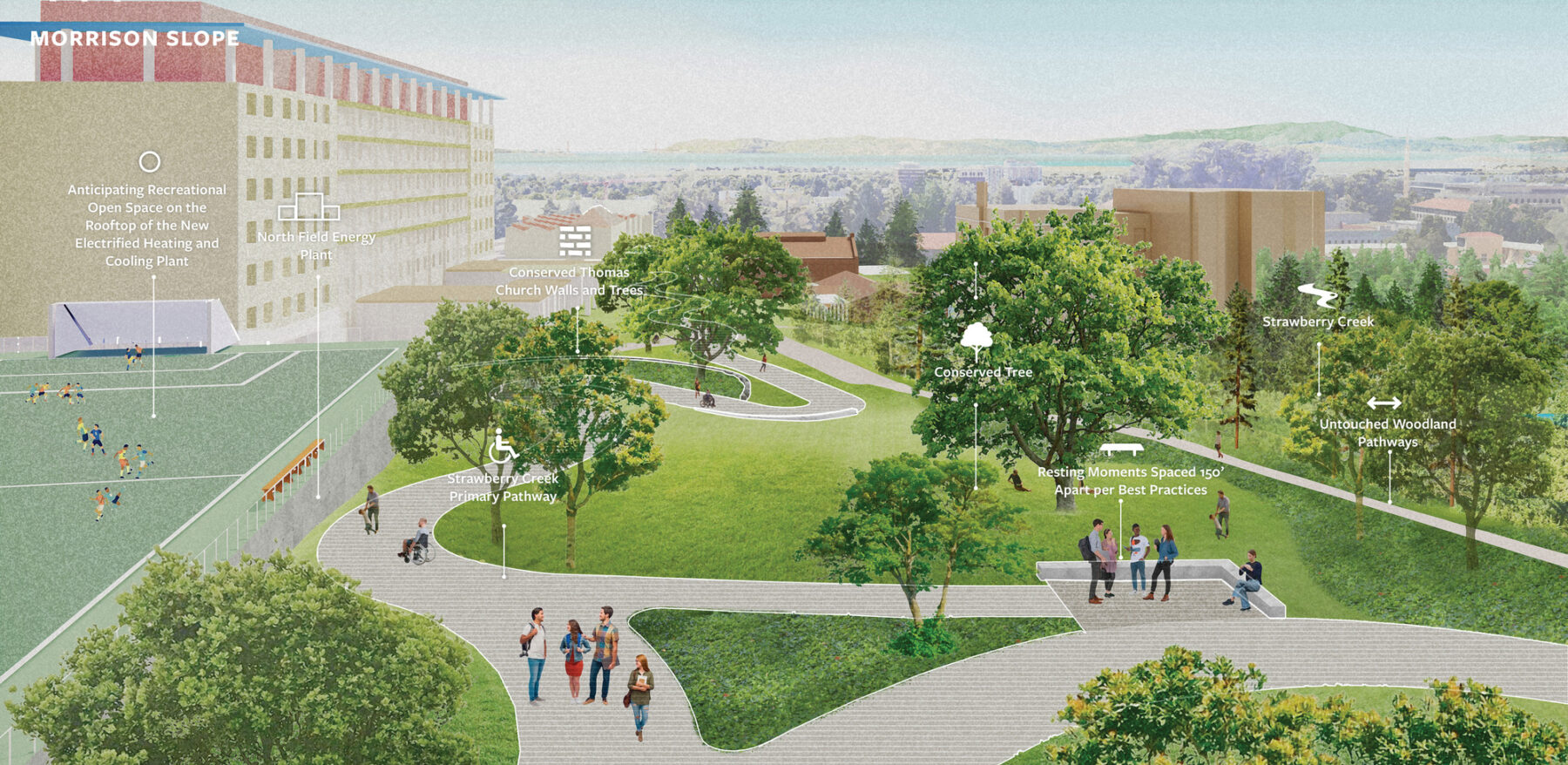
A final outcome of this effort has been the conversion of campus stakeholders into disability rights and accessibility advocates, elevating accessibility in dialogue and decision-making at multiple levels, which has already proven critical in implementing the vision.
For more information contact Caitlyn Clauson or Ian Scherling.